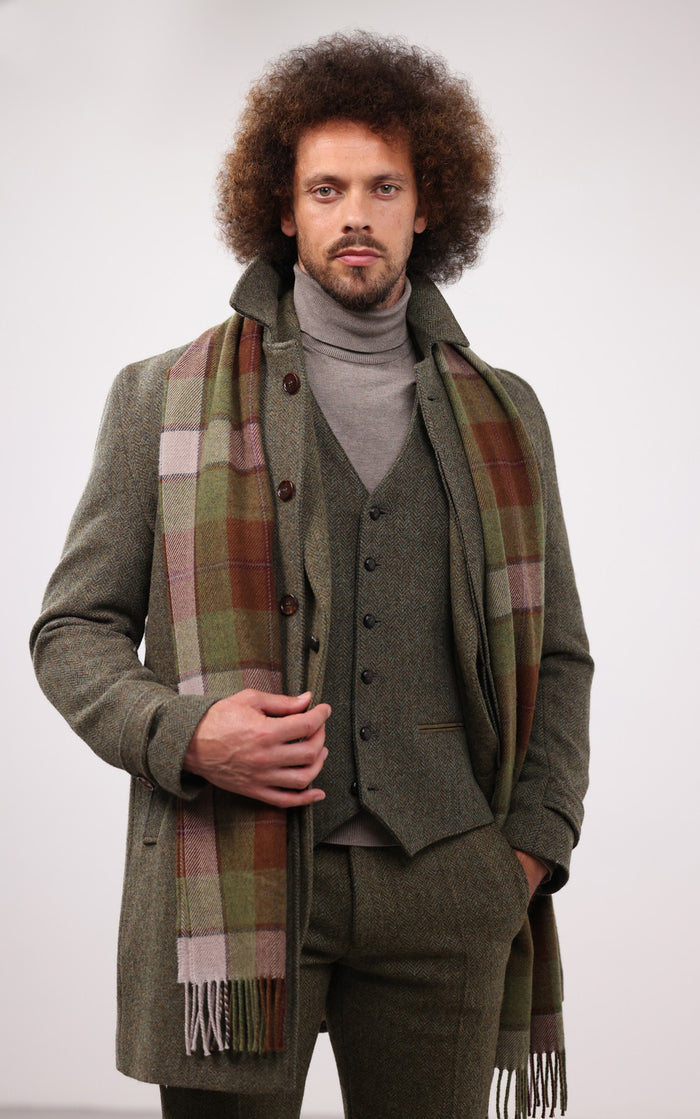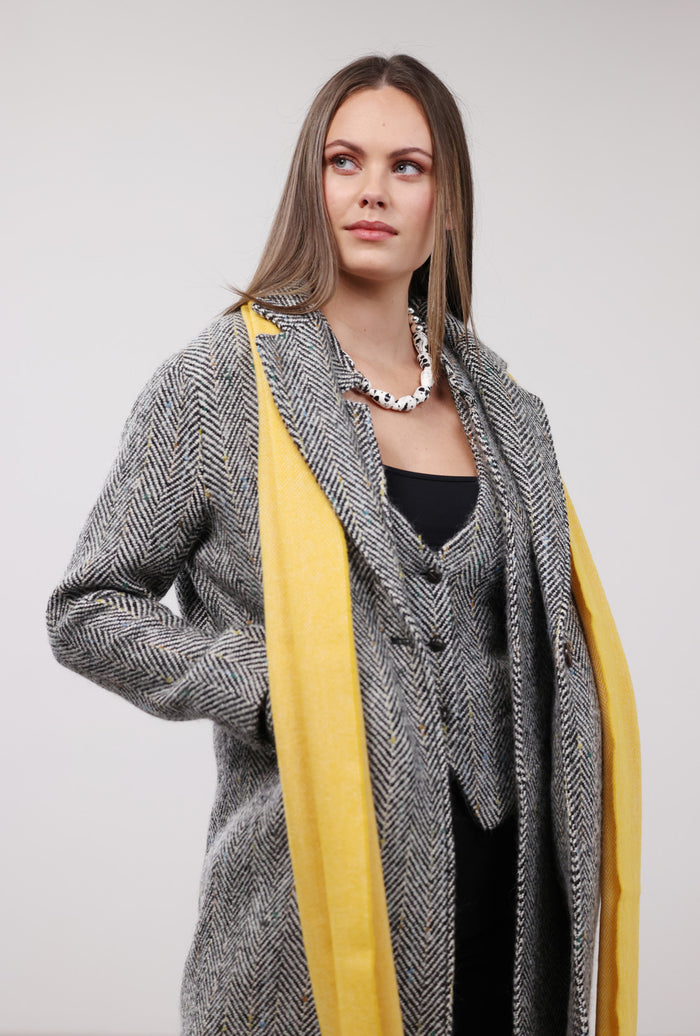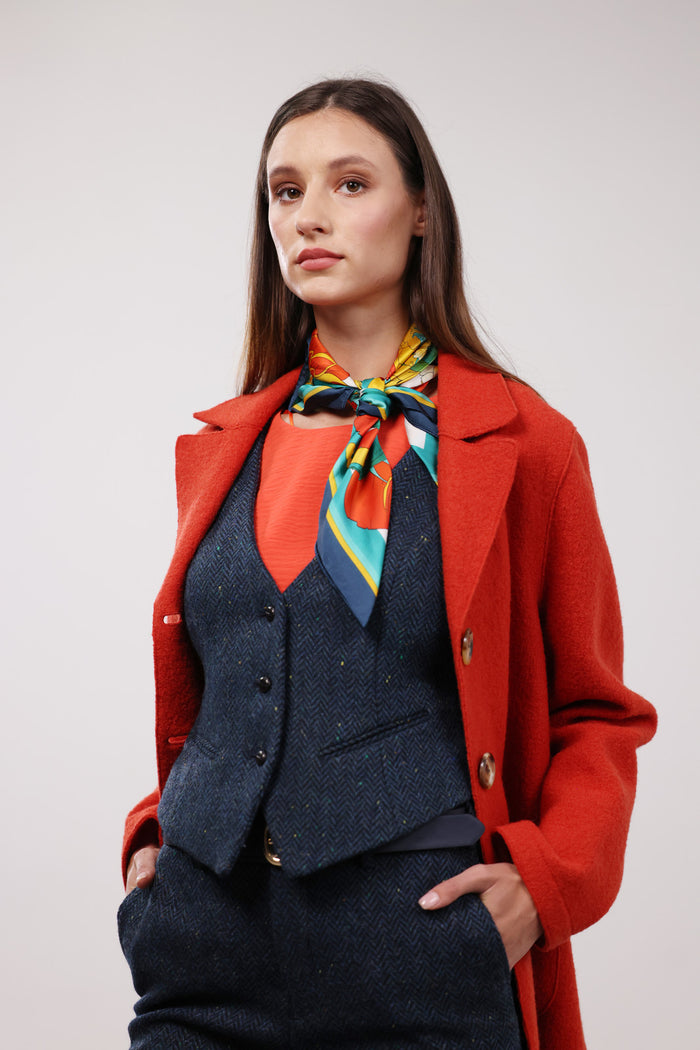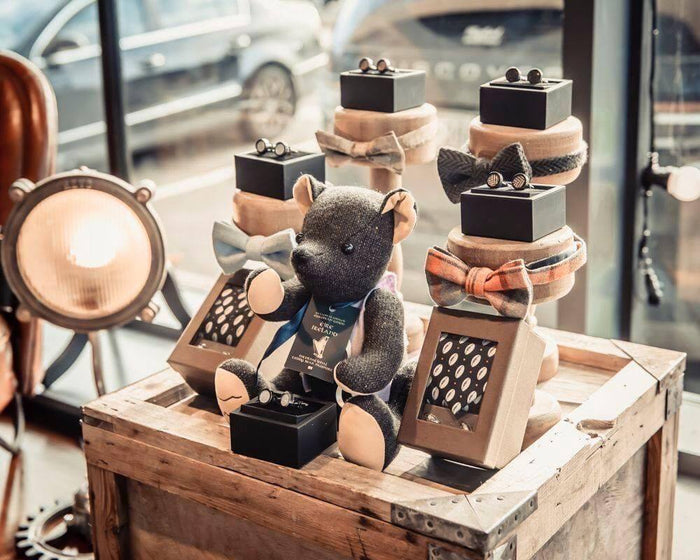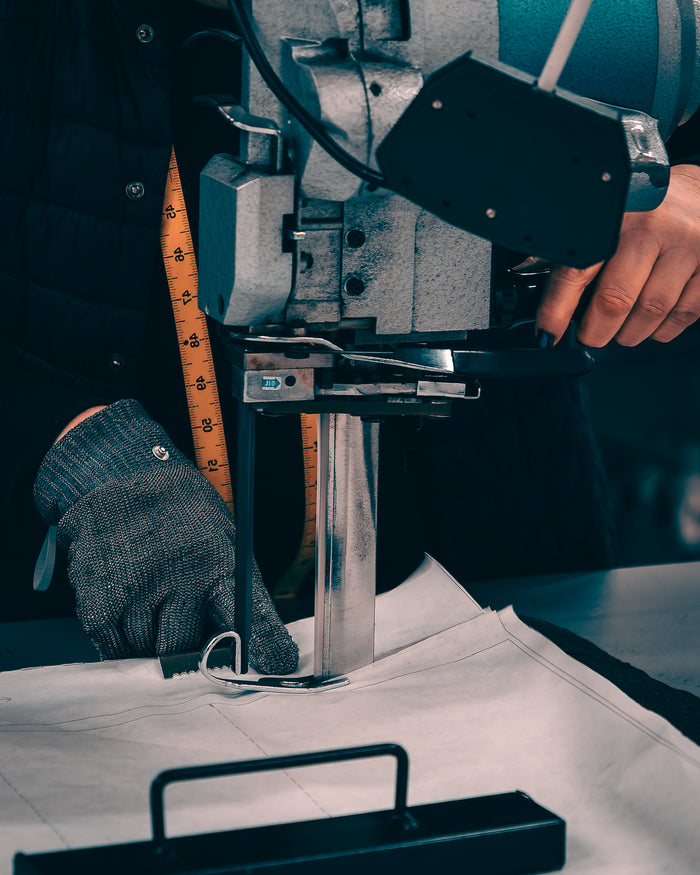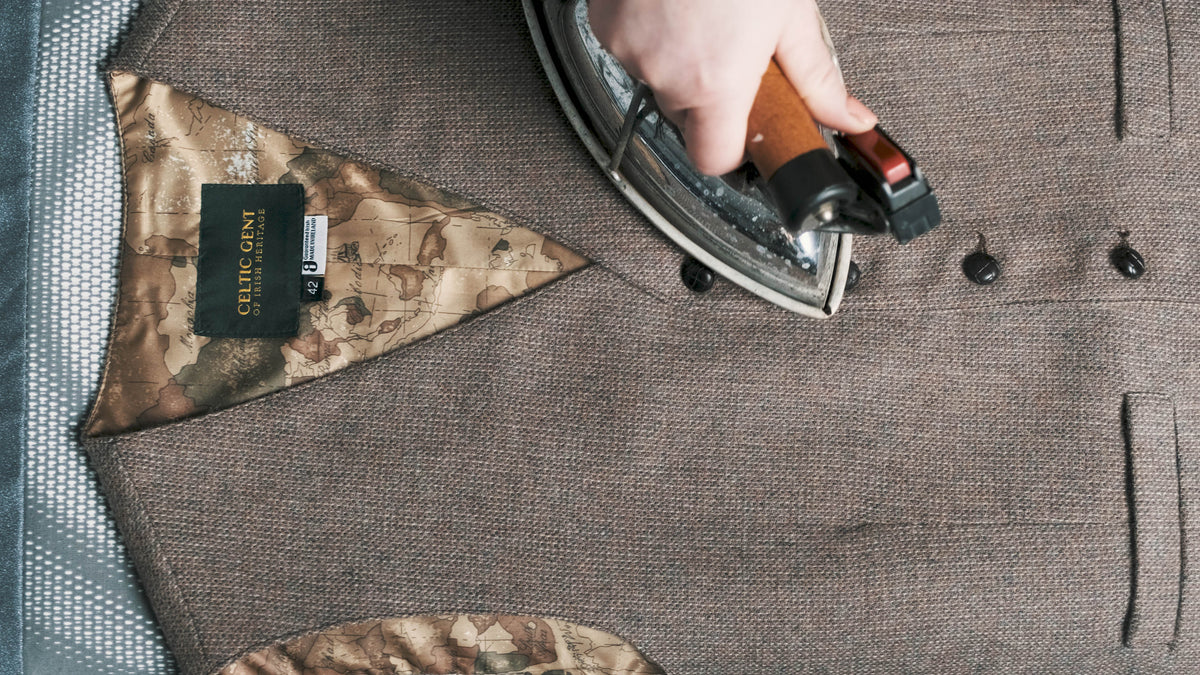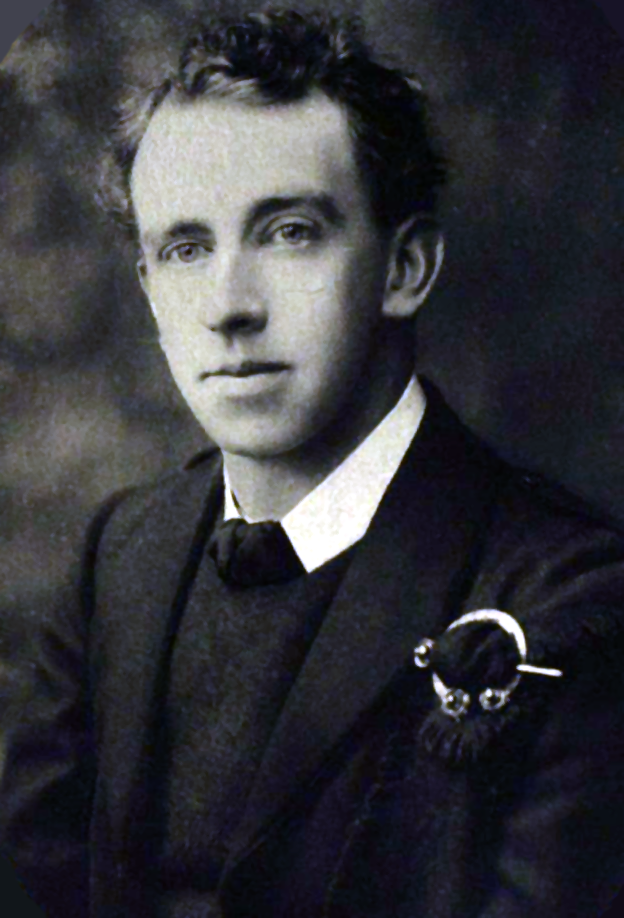
Thomas MacDonagh - A Legacy Woven in Tweed
September 01, 2025
Thomas MacDonagh – The Rebel Poet: A Legacy Woven in Tweed
Explore the life of Thomas MacDonagh, the poet, revolutionary, and teacher whose legacy is stitched into the fabric of Irish history. Just as MacDonagh blended artistry with resilience, our tweed jackets embody both elegance and strength; timeless pieces crafted for those who appreciate heritage with a modern edge.
From Classroom to Revolution
Thomas MacDonagh was born in Cloughjordan, Co. Tipperary in 1878 to a family of schoolteachers. He was educated at Rockwell College, paving the way for his future career. Upon leaving Rockwell, MacDonagh worked as a professor at St. Kieran’s College, Kilkenny, and at St. Colman’s College, Fermoy, Co. Cork. During his time, he was introduced to nationalist ideas through the Gaelic League, beginning his journey as a nationalist intellectual. Despite his professional career, MacDonagh began developing his talents as an aspiring poet. While teaching full-time, he returned to school to earn an MA degree from University College, Dublin for his thesis, ‘Thomas Campion and the Art of Poetry’. He published his first piece in 1902, followed by his most accomplished work ‘Lyrical Poems’ in 1913. Beyond just poems, MacDonagh constructed three plays, often with political implications, cementing a reputation for himself that would withstand time. The turning point for MacDonagh occurred in 1913 during the Dublin lockout. The ‘Bloody Sunday’, a day termed due to the police baton charge down Sackville St., inspired him to become active in the Dublin Industrial Peace Committee, however the efforts of mediation were countered by the employers’ obduracy. In response to these failures, MacDonagh would enrol in the Irish Volunteers, eventually becoming the company captain for a group he believed was not a tool for rebellion, but rather an armed, militant pressure group that represented a wide range of nationalist views. His passion for political change endured, leading him to become sworn into the secret Irish Republican Brotherhood (IRB). MacDonagh’s vital importance as Dublin brigade commandant is widely viewed as the main reason for his co-option to the IRB’s secret military council, which led him to finalise preparation for the 1916 Rising. On Easter Monday morning, MacDonagh formally issued the directive to mobilize the Dublin Brigade, initiating their deployment, and in his role as a member of the provisional government, signed a proclamation declaring the establishment of the Irish Republic.

The Literary Mind of MacDonagh
As a poet, playwright, literary critic and editor of the Irish Review, Thomas MacDonagh was deeply rooted in the vibrant cultural revival spreading throughout Ireland. Through his work, he captured a period of cultural transformation. MacDonagh’s first major piece, Through the Ivory Gate, perfectly resembles his deep love for Ireland and its people. The title itself alludes to MacDonagh’s poetic rendering of Ireland’s potential, seen through the eyes of a patriot. Likewise, he uses various literary techniques to represent his passion for his Irish roots. This style and these practices continued throughout his career, shaping the work we see today.
Elegance in Resistance
Thomas MacDonagh, and other revolutionaries of the time, made a profound impact on tailoring and tweed products. The beauty of his artistry during a time of resistance is a model for our products. MacDonagh’s love for Irish culture and history transcended any boundary he faced, resulting in authentic and creative work. Here at Celtic Tweed, we strive to capture the essence of that love through our tweed jackets and vests. The Irish green is a staple to our collection, representing love for Irish culture, and paying tribute to the intellects like Thomas MacDonagh who helped shape what Ireland is today.

The Significance of Irish Tweed
Weaving is one of the most ancient traditions, dating back countless generations. Specifically in Ireland, this practice can be traced back to Neolithic times. Throughout time, the domestic custom was transformed into a powerful home industry that brought hope and opportunity to areas with unforgiving land and a lack of jobs. The trend for tweed really took off in the 19th century, largely thanks to Queen Victoria and Prince Albert, who turned estate tweeds into a symbol of countryside style. In the early 20th-century, Gaelic Revivalists and rebels alike used tweed to promote cultural identity. Countess Markievicz used tweed to fashion a uniform-like outfit out of dark green for rebellious purposes. A turning point for tweed products and popularity came in the 1950s when Irish designer Sybil Connolly brought tweed to the forefront of haute couture, crafting luxurious looks for America’s high-society heiresses. Collaborating with Magee 1866 and Mourne Textiles, Connolly transformed traditional fabrics into fashion statements. Her bold red Kinsale tweed cloak, elegantly worn by model Anne Gunning, headlined the cover of Life magazine with the prominent title “Irish invade fashion world”. Modern-day tweed jackets and vests ultimately represent the past experiences of Irish tweed, highlighting the significance of it.
Tailored for the Modern Gentleman
At Celtic Tweed, our tweed jackets carry the same air of quiet rebellion and sophistication. By remembering the past and the patriots who came before us, our collection is rooted in Irish history. With sophisticated touches through our handmade tailoring, we thrive on creating bespoke products. Tweed itself – rugged, local, and traditionally Irish - stood against the British-imported fabrics. Wearing it was a subtle act of pridefulness in Irish culture. Figures like Thomas MacDonagh used tailored looks to assert that pride in the face of colonial persistence. Choosing to wear an Irish-made modern tweed jacket is a statement of authenticity over fast fashion, while channelling quiet defiance.

Wearing History with Purpose
Investing in a timeless tweed piece connects modern men to Irelands rich cultural and revolutionary past. Tweed is ultimately a staple of Irish history. Dating back hundreds of years ago, these products were at the heart of Irish culture. The colours and patterns of these products pay homage to the land of Ireland. Purchasing a tweed piece means immersing yourself in history and stepping into a lineage of Irish craftsmanship, resilience, and pride.
Sources:
- https://www.nli.ie/1916/exhibition/en/content/sevensignatories/thomasmacdonagh/ National Library of Ireland
- https://www.dib.ie/biography/macdonagh-thomas-a5168 Royal Irish Academy
- https://revival2revolution.omeka.net/collections/show/1
- Irish tweed: how the next generation of Irish designers are reinterpreting the heritage textile | IMAGE.ie


